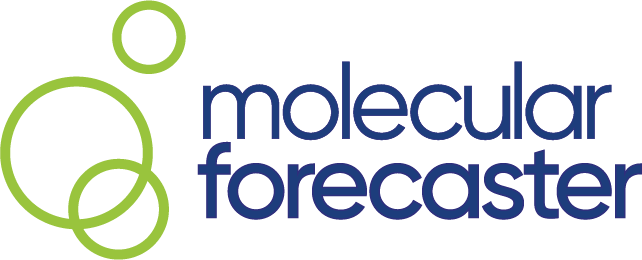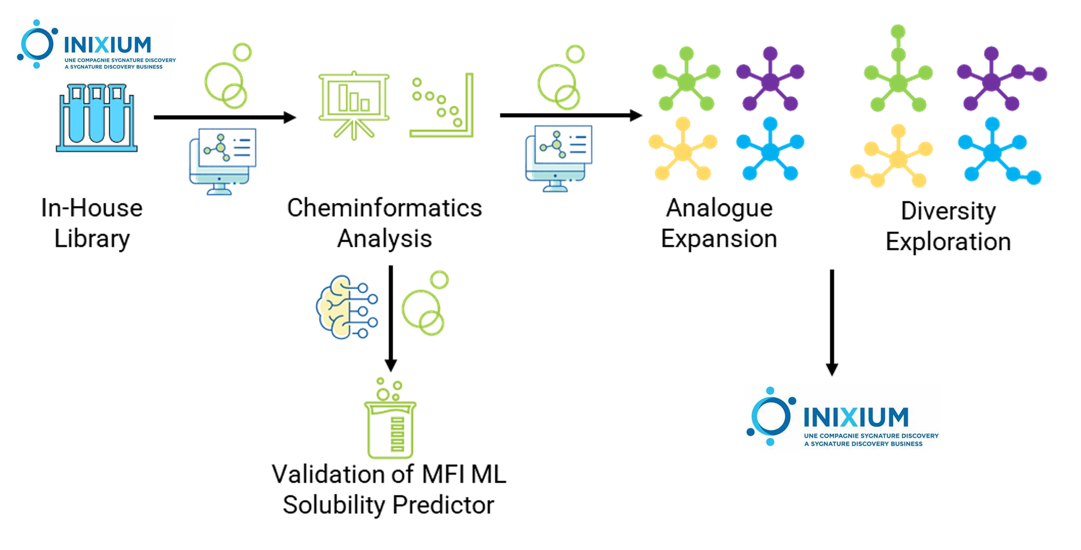Inixium
Within our multi-year collaboration with IniXium (Laval, Quebec), we provided computational insights and expertise for the characterization and expansion of their soluble and diverse fragment library. Some of our work is showcased below.
We started by analyzing IniXium’s in-house library of fragments. We used our cheminformatics tools to compute over 50 descriptors (i.e., molecular weight, logP, …) and to establish a physico-chemical blueprint of the library. One of these descriptors was solubility. The excellent quality of the aqueous solubility data generated in-house by IniXium for their fragment library also gave us the chance to benchmark our machine learning (ML)-derived solubility predictor. We used this opportunity to establish solubility cut-offs that ensured an increased probability of discriminating between soluble and insoluble compounds, which in turn enabled us to search and select only soluble fragments for inclusion in their libraries.
With this physico-chemical blueprint in-hand, we virtually sampled the commercial chemical space to allow IniXium to:
- expand their existing library with related fragments and
- supplement their library with fragments that are chemically diverse from each other and from the original library, while retaining the desired chemical properties.
An expanded, diverse library of soluble fragments would allow IniXium to explore novel protein targets and thus reach a broader client market.
As a quality service provider, IniXium needs to be prepared to experimentally screen analogues of any hits emerging from an initial fragment screen, in addition to screening a diverse set of fragments out of the gate. Therefore, for both (1) and (2), we used our cheminformatics tools to search for substructures and chemically similar/dissimilar fragments. Our graph-based search was conducted with Forecaster on over 15M compounds sourced from trusted partners like Chemspace and Enamine. We identified between 5-50 suitable structural analogues or each molecule in the original library, and a total of 1956 chemically distinct fragments for the same library. We then shared these data with our colleagues at IniXium to be used for their clients.
The IniXium team says their main goal was to characterize and extend their library of fragments in a few different ways. This objective was achieved, and the project yielded all the anticipated deliverables.
Throughout this partnership, one major highlight was the fruitful communication between our teams. By bridging our diverse knowledge and skillsets, we have created a mutually beneficial collaboration that showcases the utility of computational tools in developing high quality libraries of compounds. Thank you to IniXium for placing their faith in us and for being our trusted partners, on several projects, for over three years.
We highly recommend MFI. They are very transparent and will tell you what they can and cannot achieve.
–Dr. James Féthière, Inixium

